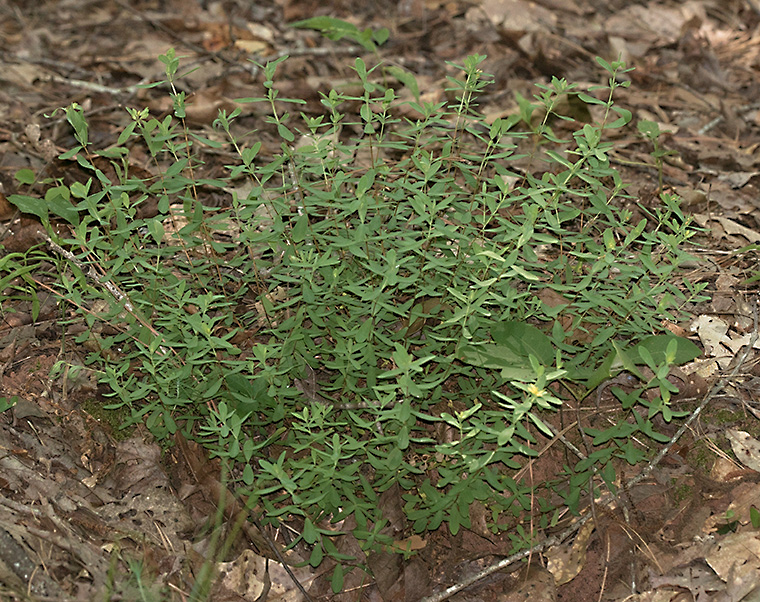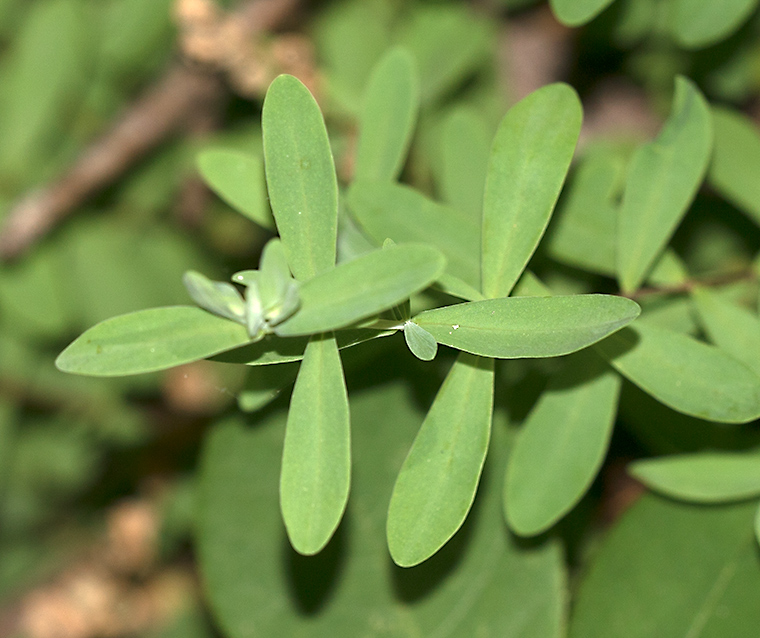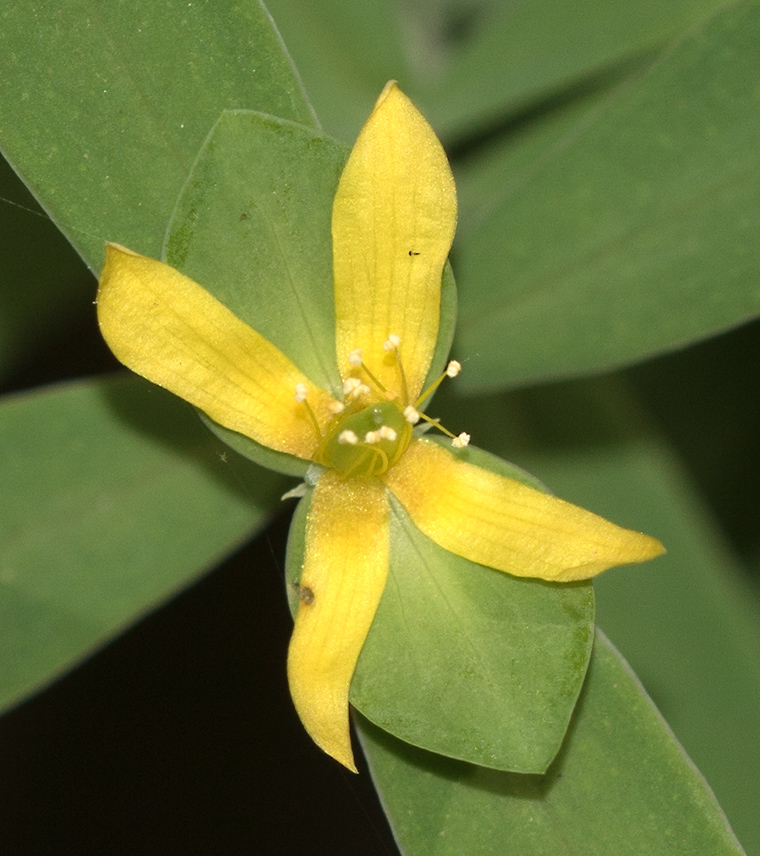I was heading into our woods to check the status of some Poison Ivy berries when I came across this interesting plant.
The leaf arrangement is quite striking. The leaves are opposite on the stem, but each pair is regularly turned 90 degrees from the adjacent pair.
The flower also shows this four-part symmetry. There is a large green pistil in the center surrounded by 12 stamens and four large yellow petals arranged in an “X” shape. According to tradition, St. Andrew, one of the 12 original disciples of Jesus and the elder brother of St. Peter, was crucified at Patras in Greece on a cross of this shape. Thus the plant is called St. Andrew’s Cross. Its scientific name is Hypericum hypericoides. To continue the saintly association, this plant is in the St. Johnswort family (Hypericaceae). but that is another story.
A cross of this “X” shape is widely encountered in heraldry, and it is sometimes called a “crux decussata”. A familiar example is the national flag of Scotland, which is blue with a white St. Andrew’s cross emblazoned across its full height and width.
St. Andrew is the patron saint of Scotland, Russia, Romania, Barbados, and Greece. Pieces of St. Andrew are today worshipped in reliquaries scattered across Europe. The Church of St. Andrew Cathedral at Patras has the small finger and the skull (part of the top of the cranium), which were presented to them by Pope Paul VI in 1964. The cross on which St. Andrew was martyred was presented to the Patras Church by the Church of St. Victor in Marseilles. The Duke of Burgundy had apparently carried it off to France during the Crusades. More relics including an occipital bone are preserved at the Amalfi Cathedral in Italy. Yet more parts of St. Andrew are preserved and venerated in Edinburg, Scotland (a “large part of the shoulder”), Warsaw, Poland, and numerous smaller sites.
When you start reading about St. Andrew and the many phenomena attributed to his influence, it is hard to know when to stop. I will just list one more example…a St. Andrew’s cross placed on a post near a fireplace or the shelf above a fireplace is said to be effective as a hex sign to prevent witches from flying down the chimney to enter the house. I bet if you try it, it will work!
Extracts and infusions from plants of St. Andrew’s Cross were used by southeastern native American tribes to treat various elements. You can read more about this subject at this site.
Discover more from A Naturalist's Journal
Subscribe to get the latest posts to your email.



